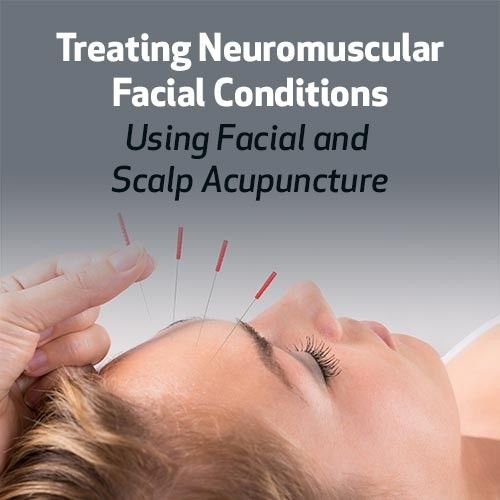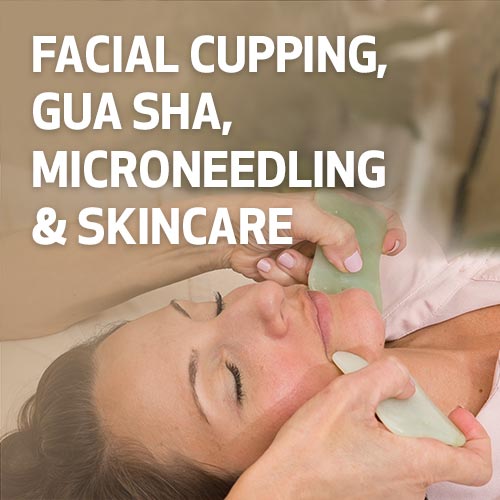Safety Concerns When Treating the Face and Neck
Michelle Gellis treats mouth area
Treating the face and neck area with acupuncture is unique with regards to safety concerns. Needling the face can pose challenges due to its heavily vascularized anatomy, relatively dense innervation and delicate and complex muscularisation. There are more blood vessels per sq cm on the face than elsewhere on the body. These vessels rise close to the surface in many areas. Although the face has more muscles per square centimetres than any part of the human body, there are only two main nerves that innervate the entire face, these nerves have tiny branches which encompass the entire face. needling into these can result in pain, neuropathy and possibly paralysis. As the face ages, these issues become more pronounced due to thinning of the skin, fat and bone loss.
Proper facial acupuncture training should involve in-depth knowledge of diagnosis, history, assessment, anatomy, contraindications, red flags and documentation.
Unlike most forms of acupuncture, facial acupuncture can have serious side effects if done improperly. Due to raising energy to the head migraines, dizziness and potentially stroke can occur if these contraindications are not prescreened for thoroughly. Less serious side effects such as bruising and bleeding can be common but are avoidable with adequate precautions.
The tools used for facial acupuncture are an important step in reducing many safety concerns. Specially designed intradermal needles for collagen enhancement, tiny glass facial cups and specially shaped gua sha tools all work in harmony to provide safe and effective treatments. If used properly these tools can relax a tight masseter, release fascial adhesions, move stagnant lymph and clear heat. Used improperly they can leave marks on the skin release a blood clot, or damage delicate capillaries.
Treating the neck can pose its own safety issues. Major veins and arteries are close to the surface. The skin on the neck is thin compared to many other parts of the body. Precision is required for needling points such as ST9, Ren 23, and SI17.
Teaching facial acupuncture classes internationally and working as a clinic supervisor for almost 20 years I have noticed students' hesitation to treat certain areas of the body. The eye area, lips and especially the neck are commonly avoided due to concerns of bruising or injury. Treating the neck is not inherently dangerous, it requires knowledge of anatomy and quality needles. In reality, the major venous structures in the neck are very thick and puncturing them would be difficult. I like to review anatomy and point location with my students in the class to provide confidence. ST9 in particular can be a sticking point (no pun intended). The way I teach finding it is to tell my student to put two fingers on the larynx, ask the patient to swallow, when you feel the laryngeal prominence slide your index finger laterally into the space between the larynx and the SCM. Find the carotid pulse, and don’t needle there! The worst I have seen in needling the neck is a bruise from nicking a capillary, not lethal but can be unsightly.
The area around ST5 & 6 can be tricky as well due to facial veins and nerves, usually, some gentle palpation, good lighting and a trained eye along with a generous application of arnica gel can alleviate any potential problems. I always keep some Yunnan baiyao and Q-tips close at hand when removing needles should any bleeding or bruising occur.
Expert training in prescreening, needling and using palpation and visual skills, quality needles and other specialized tools, in-depth knowledge of facial anatomy, and appropriate lighting will address many of the potential issues when needling the face and neck. Even with these tools, remember that everyone’s facial structure is slightly different. I tell my students to practice facial acupuncture skills for 10-12 treatments before attempting to practice on a patient. Your comfort level will improve, and so will your patient's satisfaction and results.
Other Courses By This Teacher
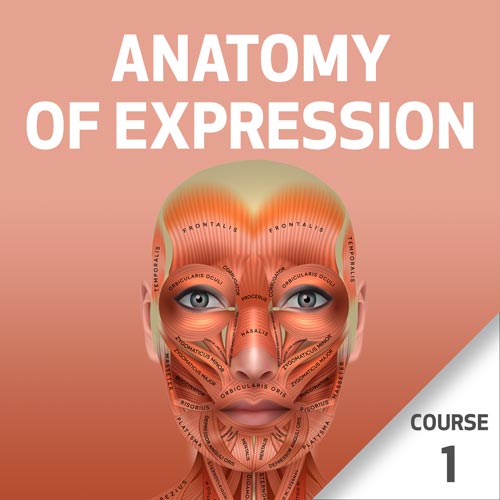




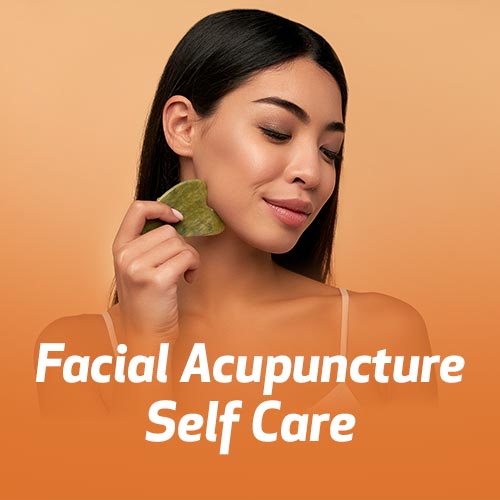

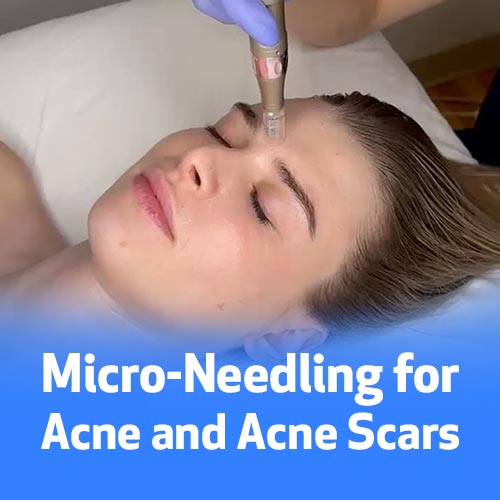

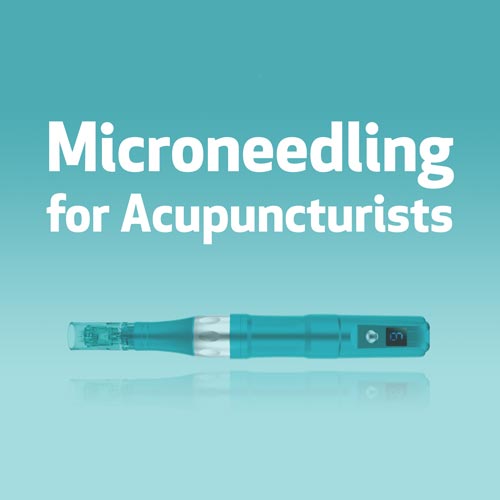

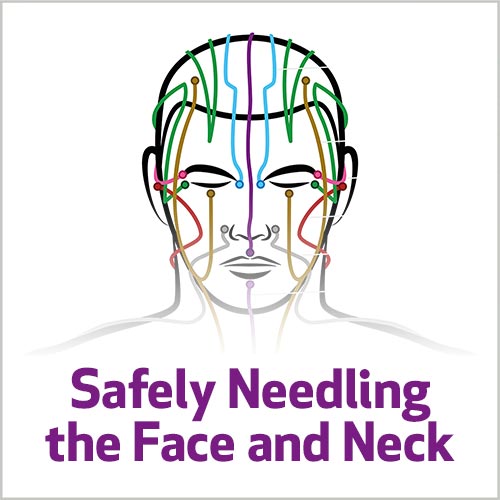

Overview
Delve into the world of our emotions, expressions, and how they manifest on a body/mind/spirit level to shape the landscape of our face. We will look at the relationship between our facial expressions and the relationship to the Zang/Fu. treatment modalities will be taught.
This webinar includes 3.25 hours of instruction that will cover:
(1) Facial anatomy
(2) Muscles involved in facial expression
(3) The connection between our emotions, expression/repression and health
(4) Treatment
Learning Objectives
- Learn the internal/ external manifestations of emotions
- Learn which points can be used to treat the muscles
- Learn facial muscular anatomy
Your Teacher

Michelle Gellis
Michelle Gellis is a Licensed and Board Certified Acupuncture Physician. She has been a Faculty Member and Clinic Supervisor at the Maryland University of Integrative Health since 2004. Ms Gellis holds the distinction of being one of the very few acupuncturists in the US certified to teach Facial Acupuncture certification classes on an international level to other acupuncturists.
Categories
Tags
Overview
This webinar is part two of a 2-part class which ties in the anatomy of the face and the connections between the emotions, facial expressions and the channels. It covers the spirit of the points from a five element perspective and why clearing energetic blocks is important to treatments. This class will provide a deeper understanding of the connection between the facial expressions and the health of our body. Chinese face reading is taught by Dr. Cameron Bishop. The knowledge gained will enhance the students ability to design effective treatments.
Learning Objectives
- Learn treatment protocols.
- Learn an overview of chinese face reading.
- Recognize and learn protocols to treat energetic blocks.
- Learn spirit of the points on the face.
Your Teachers

Michelle Gellis
Michelle Gellis is a Licensed and Board Certified Acupuncture Physician. She has been a Faculty Member and Clinic Supervisor at the Maryland University of Integrative Health since 2004. Ms Gellis holds the distinction of being one of the very few acupuncturists in the US certified to teach Facial Acupuncture certification classes on an international level to other acupuncturists.

Cameron Bishop
Dr Cameron Bishop lived, worked and studied in Japan for four years. He specializes in Japanese Meridian therapy, Women's Health and Pain Management. He has been practicing over 25 years in South Florida. He has extensive teaching and clinical experience.
Category
Tags
Facial Acupuncture Self Care
Self-care Facial Acupuncture, Cupping, Gua Sha & microneedling for acupuncturists
with Michelle Gellis
See In StoreOverview
This course provides an in-depth tutorial on facial acupuncture, facial cupping, facial Gua Sha and micro needling that acupuncturists can implement in their own self-care. Diagnosis, contraindications, and protocols are the main focus of the class with additional skincare and lifestyle tips. Michelle Gellis, Acupuncture physician utilizes her 20 years of clinical and personal experience to guide the practitioner through treatment planning, execution and aftercare.
Learning Objectives
- Understand protocols for facial cupping self-care
- Understand protocols for facial gua sha self-care
- Understand protocols for facial acupuncture self-care
- Understand protocols for microneedling
Your Teacher

Michelle Gellis
Michelle Gellis is a Licensed and Board Certified Acupuncture Physician. She has been a Faculty Member and Clinic Supervisor at the Maryland University of Integrative Health since 2004. Ms Gellis holds the distinction of being one of the very few acupuncturists in the US certified to teach Facial Acupuncture certification classes on an international level to other acupuncturists.
Categories
Tags
Overview
Discover how to safely and effectively use Micro-Needling to treat acne and acne scars in this detailed and engaging course designed specifically for acupuncturists. This class provides a deep dive into the science and application of micro-needling, focusing on its benefits for improving skin texture, reducing acne scars, and supporting overall skin health.
You’ll learn about the anatomy and physiology of the skin, how Micro-Needling stimulates collagen production, and the role of Traditional Chinese Medicine in enhancing outcomes. Through step-by-step instruction, this course covers essential safety protocols, contraindications, needle depth guidelines, tailored for treating acne and scarring.
Whether you’re new to Micro-Needling or looking to refine your skills, this class provides the tools and knowledge you need to integrate this highly effective treatment into your practice. Equip yourself to meet patient demand and deliver transformative results while maintaining the highest standards of care. Earn CEUs and expand your expertise with this dynamic and practical course.
Learning Objectives
- Understand the anatomy and physiology of the skin and the mechanisms by which Micro-Needling stimulates collagen production and improves skin texture.
- Integrate Micro-Needling with Traditional Chinese Medicine principles to enhance patient outcomes holistically.
- Be able to identify contraindications, implement safety protocols, and troubleshoot common challenges in Micro-Needling treatments.
- Learn how to safely and effectively perform Micro-Needling treatments for acne and acne scars, including proper needle depth and protocols.
Your Teacher

Michelle Gellis
Michelle Gellis is a Licensed and Board Certified Acupuncture Physician. She has been a Faculty Member and Clinic Supervisor at the Maryland University of Integrative Health since 2004. Ms Gellis holds the distinction of being one of the very few acupuncturists in the US certified to teach Facial Acupuncture certification classes on an international level to other acupuncturists.
Categories
Tags
Overview
This course is designed to train Acupuncturists in the proper use of a microneedle pen. Students will be taught the theory and protocols for microneedling and introduced to the equipment, and products used to best support the procedure.
Learning Objectives
- Learn which products are most effective for treating the face
- Learn precautions and contraindications to microneedling
- Learn how to choose a device
- Learn how to use a microneedling device
Your Teacher

Michelle Gellis
Michelle Gellis is a Licensed and Board Certified Acupuncture Physician. She has been a Faculty Member and Clinic Supervisor at the Maryland University of Integrative Health since 2004. Ms Gellis holds the distinction of being one of the very few acupuncturists in the US certified to teach Facial Acupuncture certification classes on an international level to other acupuncturists.
Categories
Tags
Overview
The purpose of this course is to familiarize practitioners with protocols for needling the face and neck safely in order to reduce trauma to the skin and underlying structures. Anatomy, point location contraindications and precautions are reviewed. This course will
* familiarize practitioners with protocols for needling the face and neck safely
* review Facial Anatomy
* introduce tools used for safely needling the face
* review contraindications and precautions
Learning Objectives
- Review facial anatomy
- Introduce tools used for safely needling the face
- Familiarize practitioners potential concerns when needling the face and neck
- Review contraindications and precautions
Your Teacher

Michelle Gellis
Michelle Gellis is a Licensed and Board Certified Acupuncture Physician. She has been a Faculty Member and Clinic Supervisor at the Maryland University of Integrative Health since 2004. Ms Gellis holds the distinction of being one of the very few acupuncturists in the US certified to teach Facial Acupuncture certification classes on an international level to other acupuncturists.
